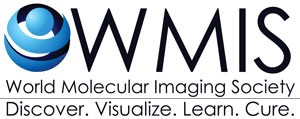Berlin/Boston, March 20, 2014 ‒ Piramal Imaging today announced that the U.S. Food and Drug Administration (FDA) has approved Neuraceq™. This approval comes only four weeks after receiving marketing authorization for Neuraceq™ from the European Commission. Neuraceq™ is indicated for …
Author: WMIS Web Admin
Call for Abstracts: WMIC 2014 “Propelling Discoveries with Molecular Imaging”
February 18, 2014 On behalf of the World Molecular Imaging Congress (WMIC) Scientific Program Committee, you are invited to submit an abstract for presentation or publication at the WMIC 2014, September 17 – 20 in Seoul, Korea. “This year’s …
Call for Abstracts: WMIC 2014 “Propelling Discoveries with Molecular Imaging” Read More »
Pulsed high-intensity focused ultrasound (pulsed- HIFU) may enhance microPET scans.

Pulsed-Focused Ultrasound Enhances Boron Drug Accumulation in a Human Head and Neck Cancer Xenograft-Bearing Mouse Model Abstract Purpose This study aims to demonstrate that pulsed high-intensity focused ultrasound (pulsed- HIFU) may enhance the fructose-conjugated 4-borono-L-phenylalanine (BPA-Fr) accumulation in tumor lesion …
Pulsed high-intensity focused ultrasound (pulsed- HIFU) may enhance microPET scans. Read More »
18F-FRP170 represents viable hypoxic tissues in glioblastoma.

Standardized Uptake Value in High Uptake Area on Positron Emission Tomography with 18F-FRP170 as a Hypoxic Cell Tracer Correlates with Intratumoral Oxygen Pressure in Glioblastoma Abstract Purpose The aim of this study was to clarify the reliability of positron emission …
18F-FRP170 represents viable hypoxic tissues in glioblastoma. Read More »
Perspectives on Promising Research: What’s Next?
November 05, 2013
The field of molecular imaging is grazed by two different animals—the workhorses, such as SPECT, PET and tried-and-true biomarkers like FDG, and the young, intrepid and unpredictable newcomers that have been given a name, taken around the track a couple times, but perhaps are still too fresh to be saddled with the responsibility of routine clinical use.
Better training key to unlocking molecular imaging’s potential
October 11, 2013
Molecular imaging has vast potential to improve healthcare in the coming years by allowing more directed, personalized therapy. But molecular imaging’s contribution may be limited until more imaging specialists are trained to interpret scans acquired with the new types of tracers being developed.
Emerging Molecular Imaging Methodologies that Hold Promise for Major Advances in Patient Care to be Highlighted at Advanced Molecular Imaging and Its Clinical Translation Course
October 21, 2013
Molecular imaging holds the promise for improved patient management in medicine and surgery. To realize this goal, a thorough understanding of the instrumentation and diagnostic agents that comprise the field is necessary.
Whole-body biodistribution and radiation dosimetry of the cannabinoid type 2 receptor ligand [11C]-NE40 in healthy subjects

Biomarkers of (neuro)inflammation are useful as a diagnostic tool in drug development and therapy follow-up. The type 2 cannabinoid receptor (CB2R) is predominantly expressed in peripheral tissues and shows the highest expression levels in organs of the immune system [1]. …
Multispectral Real-time Fluorescence Imaging for Intraoperative Detection of the Sentinel Lymph Node in Gynecologic Oncology

Multispectral Real-time Fluorescence Imaging for Intraoperative Detection of the Sentinel Lymph Node in Gynecologic Oncology

